Optical Illusions
The Ponzo Illusion
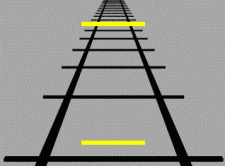
Illusions can be based on someone’s ability to see in three dimensions even though the image hitting the retina is just two dimensional. The Ponzo illusion is an example in which it uses monocular cues of depth perception to trick the eye. Tough even with two dimensional images, the brain over compensates vertical distances when compared with horizontal distances, e.g. the [vertical-horizontal illusion (https://en.wikipedia.org/wiki/Vertical-horizontal_illusion) where the two lines are exactly the same in length.
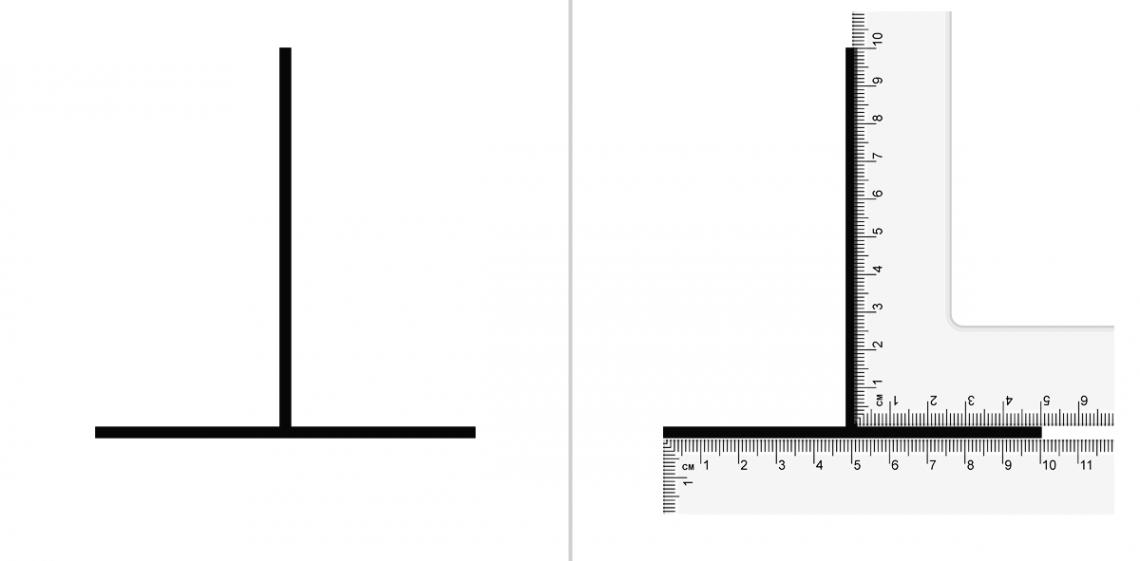
In the Ponzo illusion the converging parallel lines tricks the brain into thinking that the image higher in the visual field is farther away, so the brain thinks the image is larger, but the two images hitting the retina are same in size.
Source: (https://en.wikipedia.org/wiki/Optical_illusion)
Waterfall
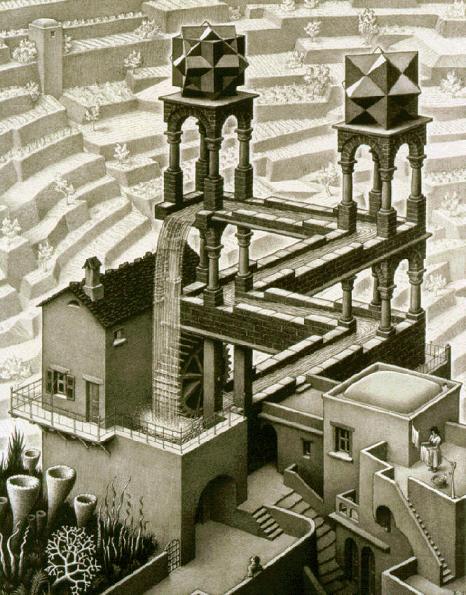
The M.C. Escher painting Waterfall exploits rules of depth, proximity and our understanding of the physical world to create an illusion. Similar to depth perception, motion perception can be responsible for several sensory illusions. Animation is based on the illusion that our brains see a series of slightly varied images produced in rapid succession as a moving picture. When we are moving, stable surrounding objects may appear to move. We may also see a large object, like a jet fighter, to move more slowly than smaller objects, like a truck, although the larger object is actually moving faster.
Source: (https://en.wikipedia.org/wiki/Optical_illusion)
Ambiguity of Direction
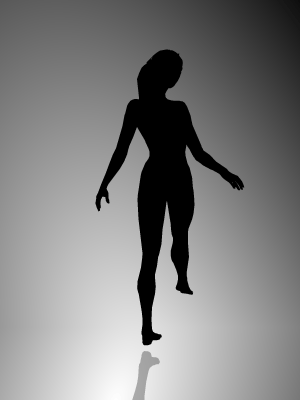
The ambiguity of direction of motion due to lack of visual references for depth is shown in the spinning dancer illusion. The dancer appears to be rotating clockwise or counterclockwise, depending on spontaneous activity in the brain where perception is subjective. Recent studies show on the fMRI that there are spontaneous fluctuations in cortical activity while watching this illusion, particularly the parietal lobe, because it is involved in perceiving movement.
Source: (https://en.wikipedia.org/wiki/Optical_illusion)
Hering Illusion
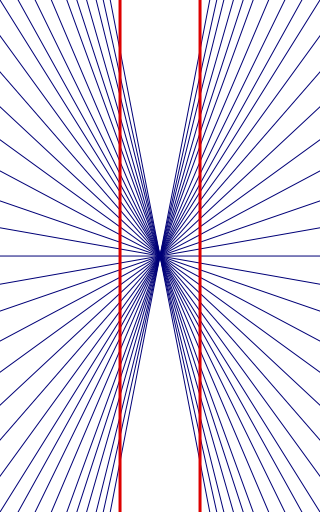
The Hering illusion is a geometrical-optical illusions, discovered by German physiologist Ewald Hering in 1861. When two straight and parallel lines are in front of a radial background (like the spokes of a bicycle), the lines appear as if they are bowed outwards.
There are many possible explanations for why perceptual distortion is produced by the radiating pattern. The illusion was ascribed by Hering to an overestimation of an angle made at the points of an intersection. If correct, it’s interesting that what yields is the straightness of the parallel lines and not of the radiating lines, implies that there is a hierarchical ordering among components of such illusion. Others have suggested that angle overestimation results from lateral inhibition in visual cortex, while others have suggested a bias inherent in extrapolating 3D angle information from 2D projections.
Another framework suggests that the Hering illusion (and several other geometric illusions) are caused by temporal delays in which the visual system must cope. In this framework, the visual system extrapolates current information to “perceive the present”: instead of providing a conscious image of how the world was around 100 milliseconds in the past (when signals first struck the retina), our visual system estimates how the world is likely to look in the next moment. In the case of the Hering illusion, radial lines trick our visual system into thinking it’s moving forward. Since we are not actually moving and the figure is static, we can misperceive straight lines as curved, as they would appear in the next moment.
Source: (https://en.wikipedia.org/wiki/Hering_illusion)
Checker Shadows
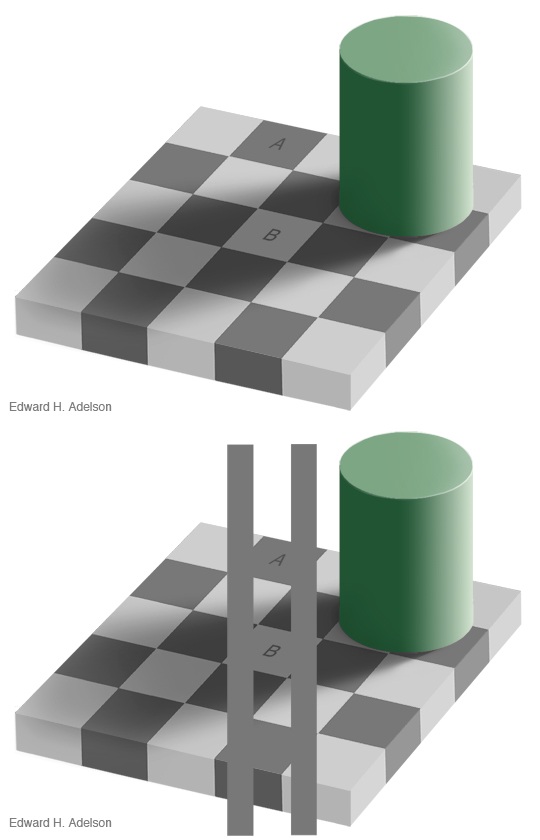
On the checkerboard tile A seems much darker than tile B. Though seen in the revised image below, A and B are actually exactly the same color. In an image editing program, they will both register an RGB value of 120-120-120.
Edward Adelson, a professor of vision science at MIT, created this illusion back in 1995 to demonstrate how our human visual system deals with shadows. When attempting to determine the color of a surface, our brains know that shadows are misleading and make surfaces look darker than they normally are. We compensate by interpreting shadowy surfaces as being lighter than they appear to the eye. So, we interpret square B, a light checkerboard tile that is cast in shadow, as being lighter than square A, a dark checkerboard tile. In reality, the shadow has rendered B just as dark as A.
Source:(http://www.livescience.com/33664-amazing-optical-illusions-work.html)
Simultaneous Contrast Illusion
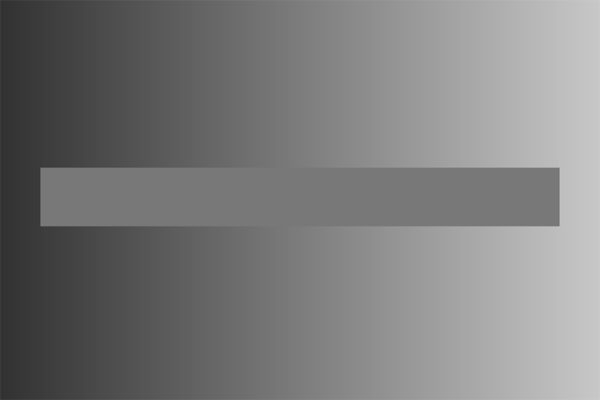
The horizontal bar in the above image seems gradated, moving from light to dark gray in the opposite direction as the background. If you cover everything but the bar itself, you'll see that it's actually monochrome. Just one solid colored bar.
The "simultaneous contrast illusion" is similar to the checker shadow illusion. The brain interprets two ends of the bar as being under different lighting, and deduces what it thinks the bar's true shading would be (if it were lit evenly along its length). It thinks that the left end of the bar is a light gray object in dim lighting. The right end looks like a darker object that is well-lit.
Source (http://www.livescience.com/33664-amazing-optical-illusions-work.html)
Illusory Motion
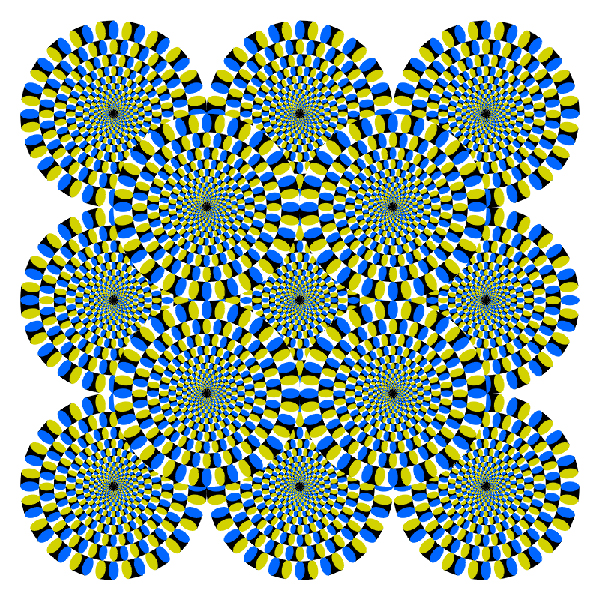
This is indeed a jpeg file, and normal picture. Not a gif file or animation.
There's no solid explanation for illusory motion. Some visual scientists think it has to do with fixation jitter, “involuntary eye movements that give the illusion that objects near what you're fixated on are moving.” Others say that when glancing around an image, motion detectors in your visual cortex get "confused" by dynamical changes in neurons, and think you're seeing movements.
Source: (http://www.livescience.com/33664-amazing-optical-illusions-work.html)
Impossible Object
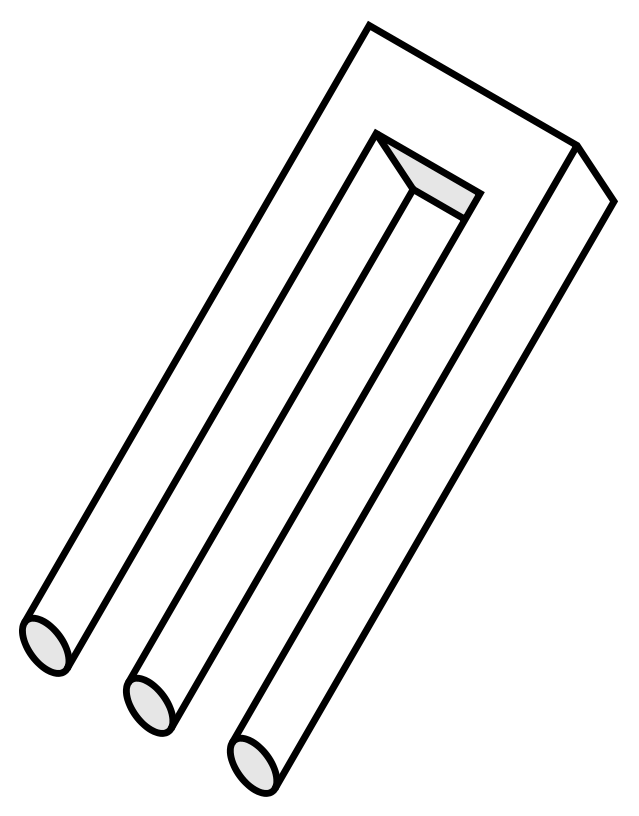
A blivet, also known as a poiuyt, devil's fork or widget, is an undecipherable figure, an optical illusion and an impossible object. It appears to have three cylindrical prongs at one end which then somehow transform into two rectangular prongs at the other end.
In its most common usage, the word "blivet" refers to an indecipherable figure. It appeared on the March 1965 cover of Mad magazine having the caption "Introducing 'The Mad Poiuyt' " (the last six letters on the top row of many Latin-script typewriter keyboards, right to left), and has appeared many times since then.
“The graphic artist M. C. Escher used these types of figures as the basis for impossible three-dimensional compositions in many of his woodcut prints.”
Source: (https://en.wikipedia.org/wiki/Blivet)
Figure–ground Organization
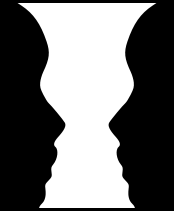
In Gestalt psychology it is known as identifying a figure from the background. For example, you see words on a sheet of paper as the "figure" and the white space as the "background".
How does the brain decide in a visual scene which item is the figure and which is part of the background? This perceptual decision can be based on many factors, which are based on chance. For example, size helps distinguish between the figure and the background, since smaller areas are often figures. Object shapes can help us distinguish figure from background, because figures tend to be convex. Movement can also help since the figure may be moving against a static environment. Color is also a factor because the background tends to continue as one color behind potentially multiple foreground figures, whose colors may be changing. Edge assignment also helps, if the edge belongs to the figure, it defines shape while the background exists behind the shape. But it's can be difficult to distinguish between the two because the edge that would separate figure from background is really part of neither, it equally defines both the figure and the background.
The process of distinguishing figure from ground (sometimes called figure-ground segmentation) is inherently probabilistic, and the best that the brain can do is to take all relevant factors into account in order to generate a probabilistic best-guess.
Source: (https://en.wikipedia.org/wiki/Figure-ground_(perception))
Café wall illusion

The café wall illusion is a geometrical-optical illusion in which the parallel straight dividing lines between staggered rows with alternating black and white "bricks" appear to be sloped.
Each "brick" is surrounded by a layer of "mortar" intermediate between the dark and light colors of the "bricks".
In the first successful attempt at its deconstruction, the illusion was ascribed largely to irradiation, the light spread from dark to bright zones in the retinal image, and indeed the image disappears when black and white are replaced by different colors of the same brightness (isoluminant). But a component of the illusion remains even when all optical and retinal components are factored out. Contrast polarities seem to be the determining factor in the tilt's direction.
Source: https://en.wikipedia.org/wiki/Caf%C3%A9_wall_illusion
Lilac chaser
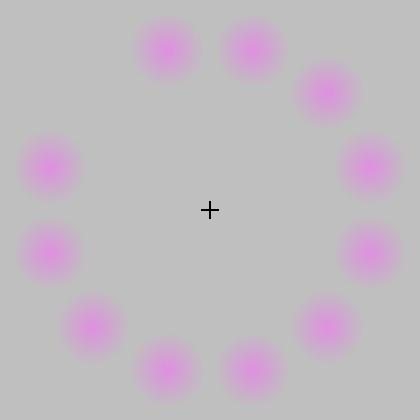
The lilac chaser is a visual illusion, also known as the Pac-Man illusion.
It consists of 12, blurred discs arranged in a circle (like the numbers on a clock), around a small black, central cross on a grey background. One of the discs disappears briefly (for about 0.1 seconds), then the next (about 0.125 seconds later), and the next, and so on, in a clockwise direction. When one stares at the cross for about 20 seconds or so, one sees three different things:
- A gap running around the circle of lilac discs;
- A green disc running around the circle of lilac discs in place of the gap;
- The green disc running around on the grey background, with the lilac discs having disappeared in sequence.
The chaser effect results from the phi phenomenon illusion, combined with an afterimage effect in which an opposite, complementary, color—green—appears when each lilac spot disappears (if the discs were blue, one would see yellow), and Troxler's fading of the lilac discs.
Source: https://en.wikipedia.org/wiki/Lilac_chaser
Ebbinghaus illusion
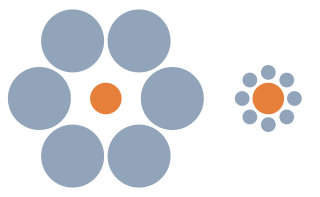
The Ebbinghaus illusion or Titchener circles is an optical illusion of relative size perception. Named for its discoverer, the German psychologist Hermann Ebbinghaus (1850–1909), the illusion was popularized in the English-speaking world by Edward B. Titchener in a 1901 textbook of experimental psychology, hence its alternative name "Titchener circles". In the best-known version of the illusion, two circles of identical size are placed near to each other, and one is surrounded by large circles while the other is surrounded by small circles. As a result of the juxtaposition of circles, the central circle surrounded by large circles appears smaller than the central circle surrounded by small circles.
Recent work suggests that two other critical factors involved in the perception of the Ebbinghaus illusion are the distance of the surrounding circles from the central circle and the completeness of the annulus, which makes the illusion comparable in nature to the Delboeuf illusion. Regardless of relative size, if the surrounding circles are closer to the central circle, the central circle appears larger and if the surrounding circles are far away, the central circle appears smaller. While the distance variable appears to be an active factor in the perception of relative size, the size of the surrounding circles limits how close they can be to the central circle, resulting in many studies confounding the two variables.
Source: https://en.wikipedia.org/wiki/Ebbinghaus_illusion
Watercolor illusion
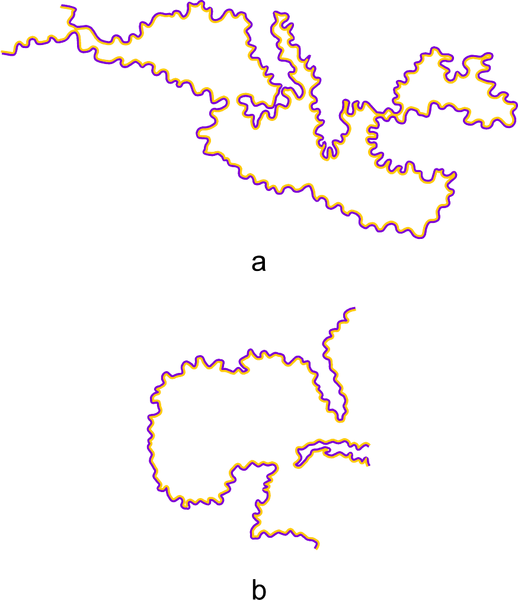
The watercolor illusion, also referred to as the water-color effect, is an optical illusion in which a white area takes on a pale tint of a thin, bright, intensely colored polygon surrounding it if the colored polygon is itself surrounded by a thin, darker border. The inner and outer borders of watercolor illusion objects often are of complementary colors.
The watercolor illusion is best when the inner and outer contours have chromaticity in opposite directions in color space. The most common complimentary pair is orange and purple. The watercolor illusion is dependent on the combination of luminance and color contrast of the contour lines in order to have the color spreading effect occur.
The Vision Wiki
- Physiology of Vision
- The Brain
- Visual System
- Fifth Cranial Nerve
- Third Cranial Nerve
- Second Cranial Nerve
- Complex Cells in the Visual Cortex
- Sixth Cranial Nerve
- Seventh Cranial Nerve
- Visual Cortex
- Eye Muscles
- Binocular Neurons
- Simple Cells in the Visual Cortex
- Fourth Cranial Nerve
- Neuroplasticity
- Brain Injury
- Acquired Brain Injury
- Neuro Optometric Rehabilitation
- Traumatic Brain Injury
- Sports and Brain Injury
- The Eyes
- Gabor Patches
- Visual Snow
- Ocular Immune System
- Evolution Of Eyes
- Blue Field Entoptic Phenomena
- Bates Method
- Ophthalmology Lecture
- Optical Illusions
- Stereo Illusions
- Eye Problems
- Binocular Vision
- Lazy Eye
- Lazy Eye Treatments
- Reading
- Fields of Study
- Research
- Glaucoma
- Virtual Reality
- Organizations
